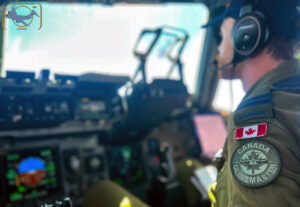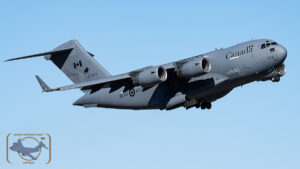The Canadians bringing the HI-RAIN.
Royal Canadian Air Force 429 Squadron conduct HIRAIN missions in Australia apart of Exercise Talisman Sabre 2025.
Report: Jaryd Stock
Images: Jaryd Stock & Australian Defence Force
A Royal Canadian Air Force CC-177A (C-17A) Globemaster III transport aircraft from 429 Squadron based at Canadian Force Base Trenton has deployed a U.S. Army M142 high-mobility artillery rocket system (HIMARS) and Australian Army soldiers to Christmas Island for Exercise Talisman Sabre 2025.
The operation demonstrated the ability of partner nations to rapidly deploy and employ land-based, long-range precision fires.
The Christmas Island activity focused on a simulated HIRAIN (HIMARS Rapid Infiltration) mission, in which a HIMARS launcher and supporting communications vehicle are flown to a forward airfield, a movement that extends the range of the munition fired.
Once the mission is conducted, the vehicles withdraw rapidly by the aircraft before counter-fire can be brought to bear.
HIRAIN brings deterrence through the unpredictable appearance of land-based, long-range precision fires against land and maritime targets, and is an essential element of littoral warfare, which the Australian Army is now deeply focused on through the enhancement of its forces and capabilities.

Targeting data was provided in real-time by the combined US-Australian Land Effects Coordination Cell in South Australia, with data transmission supported by Project OPEROSE, the ADF and US operational test and evaluation of a combined Command and Control node for theatre-level precision long-range fires.
The task was a key test for OPEROSE, which aims to enhance targeting, target prosecution and sustained guided weapons logistics.
Supervising the activity was Lieutenant Colonel Ed Guelfi, of the US Army’s 17th Field Artillery Brigade, who said the strategic message behind the mission was clear.
“Collectively, we have rapidly deployed a HIMARS to demonstrate our ability to put combat power anywhere, at any time of our choosing,” Lieutenant Colonel Guelfi said.
On arrival, the HIMARS vehicles underwent Australian Border Force bio-security checks, and then the vehicles manoeuvred into a suitable position to simulate the conduct of a HIMARS launch.
Overseeing the deployment of the HIMARS capability to Christmas Island was the Royal Australian Navy’s Commodore Peter Leavy.
“Most of the Island is actually a national park, so there is a lot of preparatory work needed to deploy capabilities up here and this was a great exercise to test all of those aspects to ensure we could operate in this area,” Commodore Leavy said.
“Christmas Island is very strategically positioned in the Indian Ocean and we need to be able to operate here and to protect the territory and the Australian citizens that live here.”
The crews from 429 Squadron appreciated the opportunity working together with regional partners during the exercise.
Captain Evan Mills from the RCAF and a pilot on the C-17 and conducting various missions throughout the duration of the exercise said that the 429 Squadron conducts a variety of roles back home in Canada but Talisman Sabre brought on new opportunities grow and learn.

“In Talisman Sabre we are able to operate into austere airfields, for instance we have been operating into Curtin airfield and conducting operations and we have made sure we are flexible with tasking’s during the exercise.
We are able to work alongside our Australian counterparts and gain interoperability with them as they take the lead in planning the missions for us here in Australia.”
429 Squadron brought out two crews and one C-17 Globemaster to participate in the exercise. It was the largest contingent to date the Canadians participated in the exercise with over 600 personnel and two CC-130J Hercules and three CC-146 Griffon helicopters from 427 Squadron conducting Combat Search and Rescue missions in Papa New Guinea.


Jaryd Stock is based in Sydney Australia. He has been a die-hard aviation enthusiast from a young age when he was chauffeured around by his father to various airshows and airports around Australia. At his first Airshow he witnessed the awesomeness of a General Dynamics F-111C and immediately fell in love with aviation.
Jaryd picked up a camera at a young age and has never looked back. He now combines photography and writing to highlight “Downunder” aviation; especially U.S. DoD units. Jaryd uses Nikon cameras and lenses.

